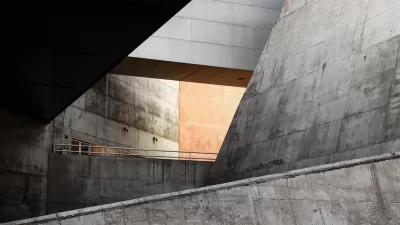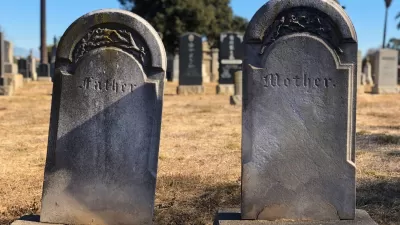At Yale, a modernist landmark is preserved and revitalized. Ada Louise Huxtable looks at the challenges in updating the harshness of brutalist architecture.
"Rudolph's building was never trouble free. Too small from the start, it was a terrible fit for the painting and sculpture departments crammed into it. There were no climate controls. Unsympathetic remodeling sabotaged the architect's vision. According to Robert A.M. Stern, the dean of the architecture school, who initiated and championed the restoration, the building was in such a terminal state of dysfunction and disrepair that only the high cost and extreme difficulty of demolishing solid concrete saved it."
"Many of the preservation problems were due to Rudolph's "modernism." Boldly unconventional in concept, plan, materials and execution, the building's untested and experimental components had not only disintegrated beyond repair, but were inferior to subsequent advances in basic building technology. It made no sense, nor was it possible, to seek matching replacements. The structure was essentially stripped to its frame and rebuilt.
Because this degree of reconstruction skews our ideas about authenticity, it undermines a defining principle of preservation. For traditional restoration, old quarries can be reopened and old techniques revived to stay true to history. It is the retention or reuse of the original fabric that separates the genuine artifact from the Disney replica. For modernist buildings, the challenge and the process are disturbingly different. Replacement and reconstruction are increasingly necessary for obsolete materials and technologies. This requires unprecedented judgment calls, tailored to each individual structure."
FULL STORY: The Beauty in Brutalism, Restored and Updated

Alabama: Trump Terminates Settlements for Black Communities Harmed By Raw Sewage
Trump deemed the landmark civil rights agreement “illegal DEI and environmental justice policy.”

Study: Maui’s Plan to Convert Vacation Rentals to Long-Term Housing Could Cause Nearly $1 Billion Economic Loss
The plan would reduce visitor accommodation by 25% resulting in 1,900 jobs lost.

Planetizen Federal Action Tracker
A weekly monitor of how Trump’s orders and actions are impacting planners and planning in America.

Wind Energy on the Rise Despite Federal Policy Reversal
The Trump administration is revoking federal support for renewable energy, but demand for new projects continues unabated.

Passengers Flock to Caltrain After Electrification
The new electric trains are running faster and more reliably, leading to strong ridership growth on the Bay Area rail system.

Texas Churches Rally Behind ‘Yes in God’s Back Yard’ Legislation
Religious leaders want the state to reduce zoning regulations to streamline leasing church-owned land to housing developers.
Urban Design for Planners 1: Software Tools
This six-course series explores essential urban design concepts using open source software and equips planners with the tools they need to participate fully in the urban design process.
Planning for Universal Design
Learn the tools for implementing Universal Design in planning regulations.
Caltrans
Smith Gee Studio
Institute for Housing and Urban Development Studies (IHS)
City of Grandview
Harvard GSD Executive Education
Toledo-Lucas County Plan Commissions
Salt Lake City
NYU Wagner Graduate School of Public Service





























